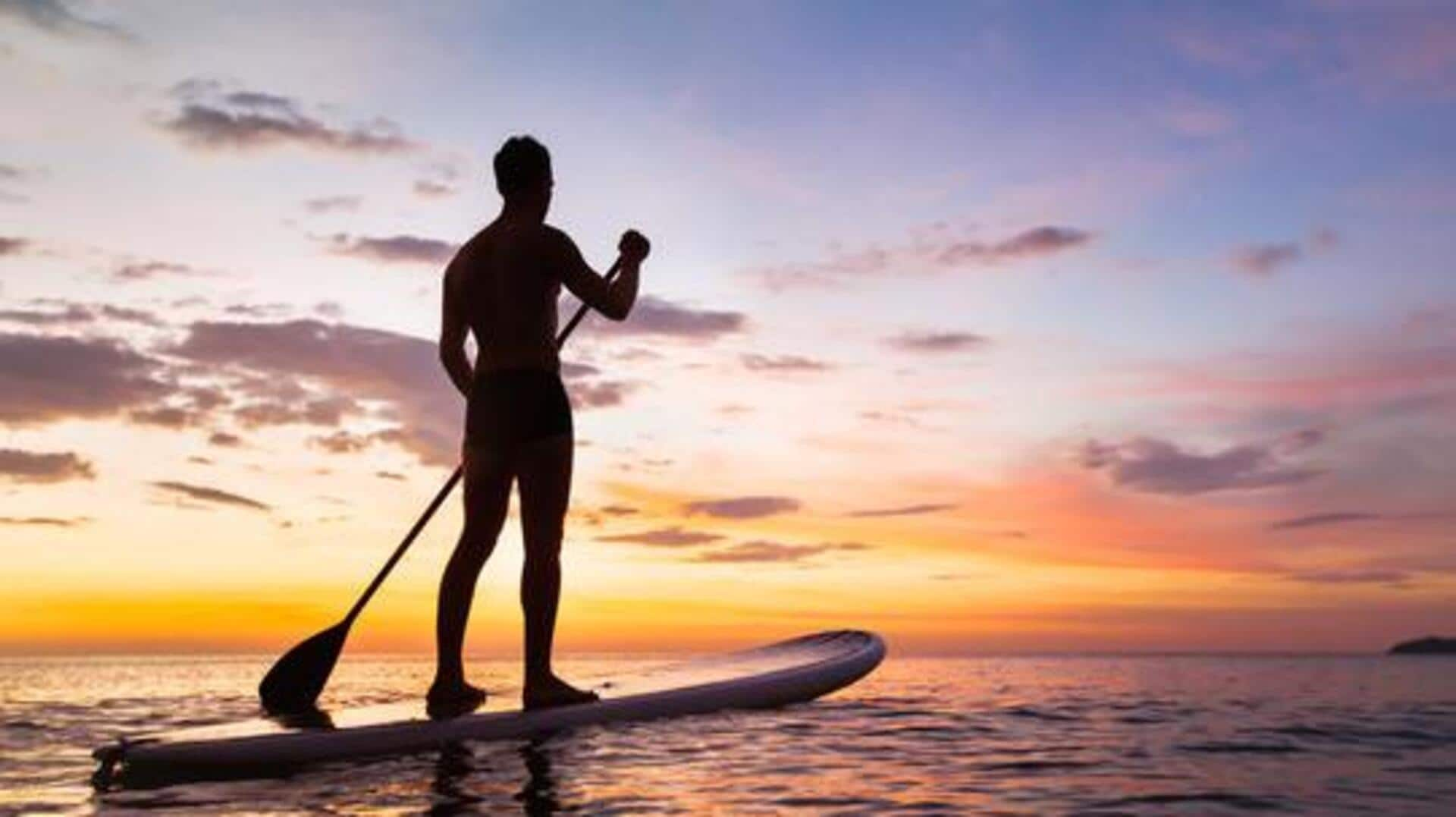
Paddleboard mapping: Discover hidden water bodies with this thrilling adventure
What's the story
The adventure of navigating the world's waterways has a new twist: stand-up paddleboard (SUP) mapping.
This exciting endeavor blends the fun of stand-up paddleboarding with the meaningful mission of mapping unexplored or under-documented rivers and lakes.
Adventurers not only experience the tranquility and challenge of traversing these waters but also contribute to a growing body of knowledge benefiting environmental and recreational users.
Preparation
Preparing for your expedition
Before embarking on a SUP mapping adventure, thoroughly study the river for its current, obstacles, and entry/exit points.
Choose a sturdy SUP designed for touring and prioritize safety gear such as helmets, life jackets, and waterproof communication tools.
First aid and swift water rescue training are also crucial for maximizing safety.
Tools
The right tools for mapping
Accurate mapping on a SUP expedition requires the right tech.
GPS devices are key for logging exact locations, even in isolated regions.
High-resolution waterproof cameras or drones are vital for documenting the surroundings, assisting in the creation of detailed maps.
Plus, outdoor exploration apps are super helpful for recording water conditions, wildlife sightings, and landmarks.
Navigation
Navigating challenges on water
SUP mapping requires expert navigation of fast-moving currents, hidden underwater obstacles, and abrupt weather changes.
Mastering the art of river feature interpretation is crucial for hazard avoidance and accurate data collection.
Drilling maneuvers like rapid turns and emergency stops ensures safety and efficiency during your mapping adventure.
This isn't your average hiking trip! You'll need to become a pro at navigating the wild and unpredictable world of river mapping.
Engagement
Engaging with local communities
Connecting with local communities prior to your expedition can provide invaluable knowledge about the uncharted territories of rivers or lakes.
They can offer advice on navigating challenging sections or share historical and cultural anecdotes, adding depth to your project.
Including them in conservation initiatives based on your discoveries can also foster a sense of ownership and responsibility for these natural resources.
Conservation
Contributing to conservation efforts
The data you gather through SUP mapping can be incredibly valuable for conservation efforts. By pinpointing pollution sources, invasive species habitats, or areas that need protection due to their ecological importance, you can make a real difference.
Share your maps and discoveries with environmental organizations or governmental bodies to influence policy decisions and advocate for sustainable management of these crucial waterways.